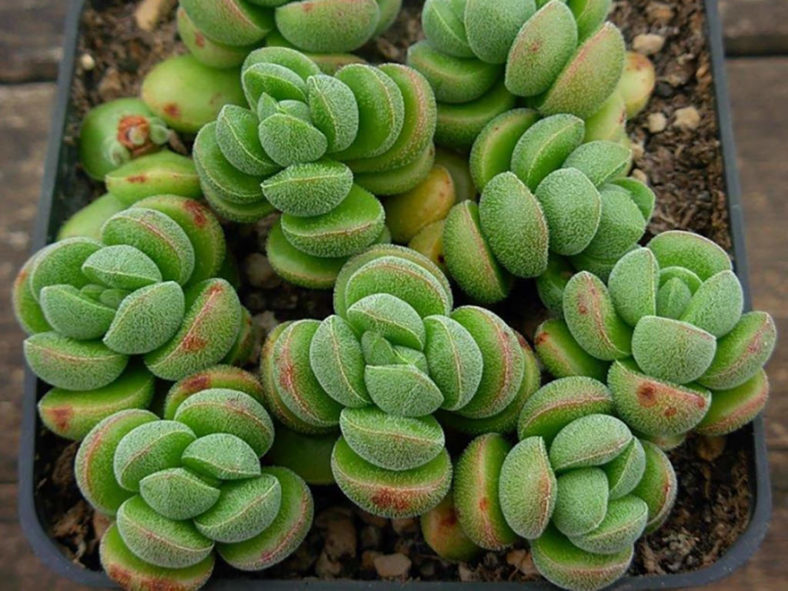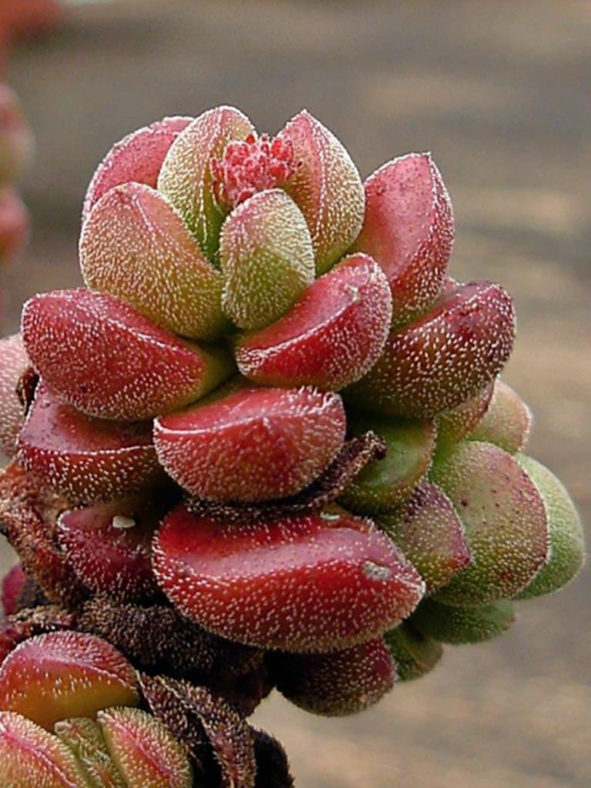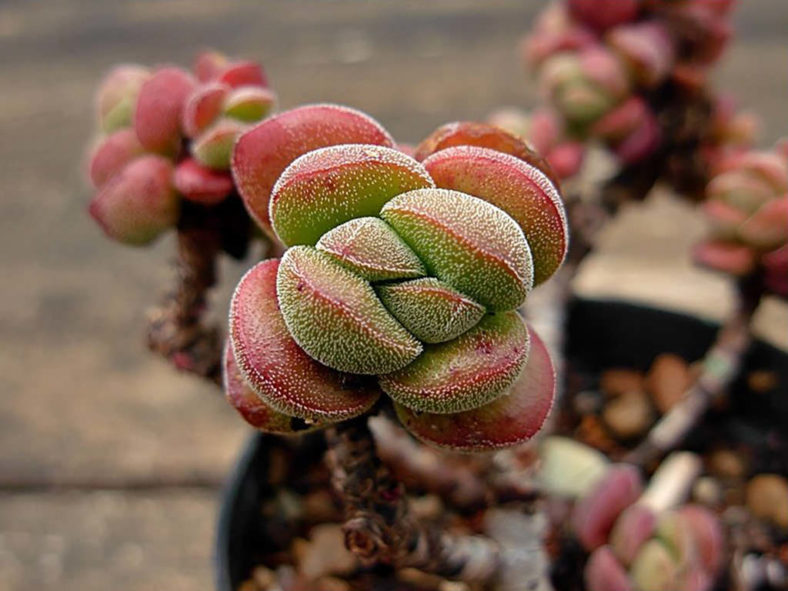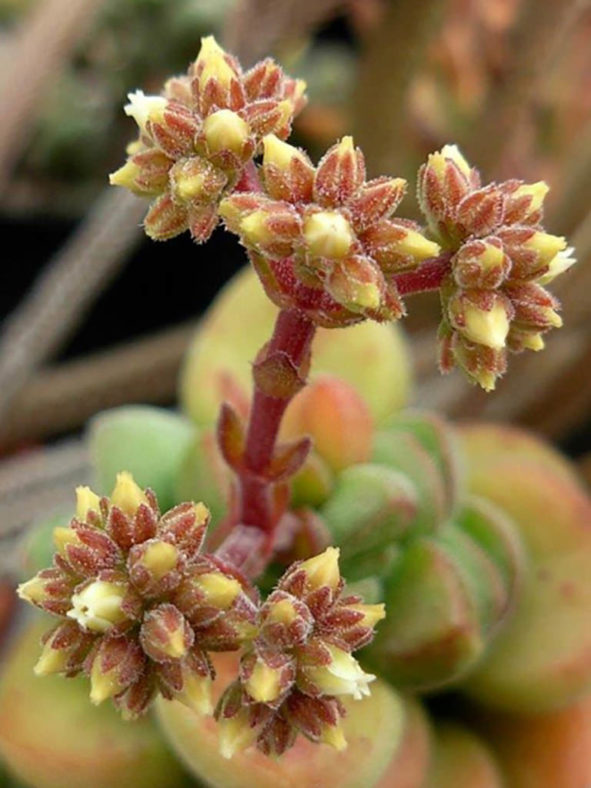Scientific Name
Crassula 'Angela'
Scientific Classification
Family: Crassulaceae
Subfamily: Crassuloideae
Genus: Crassula
Origin
Crassula 'Angela' is a spontaneous hybrid found among seeds of Crassula alstonii by Corrado Coccorese in 1999 in Bari, Italy. The second parent may be Crassula hirtipes due to scattered hairs on the surface of the whole plant.
Description
Crassula 'Angela' is a small succulent that forms rosettes of green leaves that take on a lovely, ruby red color when stressed. The rosettes can grow up to 1.2 inches (3 cm) in diameter. The plant grows a stem with age, losing lower leaves and becoming ungainly.
The flowers are yellowish with recurved hairs and appear in clusters on peduncles with 3 to 4 pairs of bracts in fall. They are almost identical to those of Crassula alstonii, only hairier.

How to Grow and Care for Crassula 'Angela'
Light: C. 'Angela' prefers full sun to partial shade. However, intense afternoon sun in the hottest period of summer can burn the leaves of the plant. Therefore, a place with morning sun and afternoon shade would be perfect. Indoors, place your plant in a window that receives at least 6 hours of direct sunlight.
Soil: This plant is not particular about soil pH but requires very porous soil with excellent drainage. Use commercial potting soil mixes designated for succulents, or mix your own.
Temperature: Like most Crassulas, this succulent will tolerate short-term freezing, but extremes of cold or heat will cause it to lose leaves and die. C. 'Angela' can withstand temperatures as low as 30 °F (-1.1 °C). USDA Plant Hardiness Zones 10a to 11b, 30 to 50 °F (-1.1 to 10 °C).
Watering: Avoid overwatering using the "soak and dry" method, where the soil is soaked with water, slowly drained, and left to dry out before watering again. Reduce watering in winter. Potted plants require more frequent watering than those in the ground.
Fertilizing: C. 'Angela' does not need much feeding but will benefit from a small amount of organic fertilizer when it starts actively growing in mid-spring.
Repotting: Repot as needed, preferably in spring, at the beginning of the active growth period. Make sure the soil is dry before you begin repotting.
Propagation: This succulent is generally started by leaves or stem cuttings. It can also be grown from seeds and offsets. The easiest way is to propagate C. 'Angela' from a single leaf, while using stem cuttings is the fastest way to get a decent-sized plant. These processes are most successful at the beginning of the plant's active growth period. Sow the seeds in the spring or summer. Propagating by dividing offsets is easy because the parent plant has already done most of the work for you.
Learn more at How to Grow and Care for Crassula.
Toxicity of Crassula 'Angela'
C. 'Angela' is nontoxic to people and pets.
Links
- Back to genus Crassula
- Succupedia: Browse succulents by Scientific Name, Common Name, Genus, Family, USDA Hardiness Zone, Origin, or cacti by Genus
Photo Gallery
Click on a photo to see a larger version.


